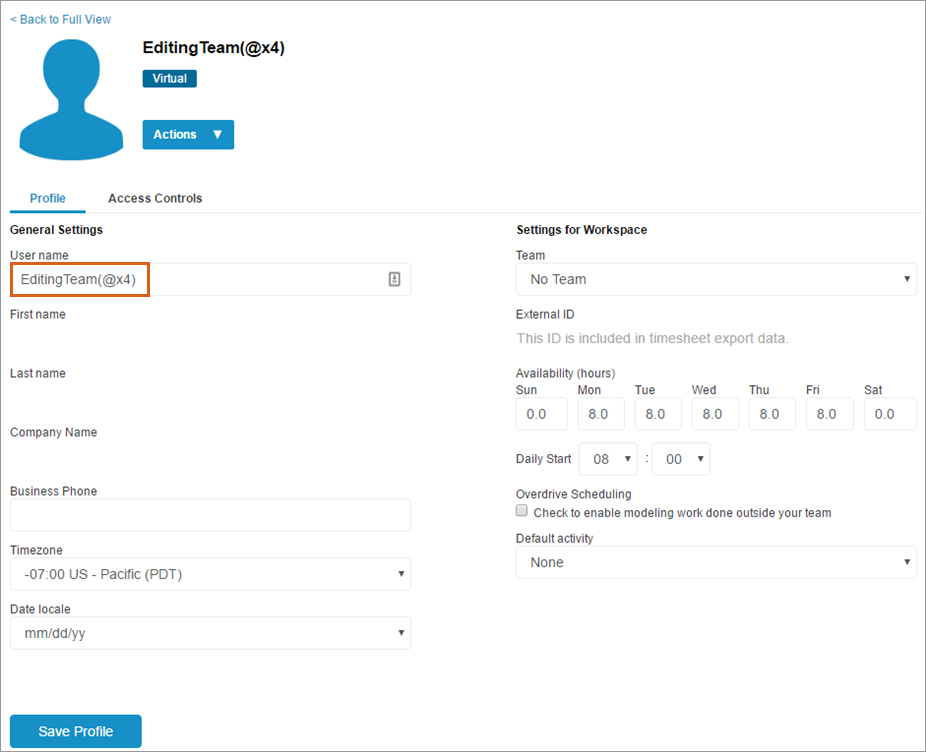If you use LiquidPlanner, you already know about Virtual Members, the super-handy placeholder for tasks that you don’t want to assign to real workspace members — like new hires or outside contractors.
A Virtual Team allows you to give a single virtual member the power (daily availability) of multiple virtual resources.

The scenario
- Within your plan you have editing tasks that you farm out to an outside editing service.
- Any number of people could be working on the same editing task at the same time. The number of people working on the task will determine how quickly it gets done.
- Your editing service has promised that for each editing task assigned to them, they can dedicate 32 man-hours each day. That represents 4 people, each with 8 hours daily availability.
The dilemma
- You can’t represent all four editors as one virtual member, because a normal resource has a daily max availability of 24 hours.
- You could create four different virtual members to represent those editors, but you don’t want to bother with tracking and updating their progress individually.
The solution
A virtual team! You create a virtual team in the same manner that you create a normal virtual member. The difference is in the resource name:

- In the image above, you see that a multiplier has been appended to the name of the virtual member: (@x4)
- That multiplier tells the scheduling engine that this virtual resource actually has 4 times the number of stated hours available each day. In other words, 32 hours per day.
- Any task assigned to this resource will get done 4 times faster than it would without the virtual team multiplier.
The caution
Assigning a task to a virtual team is only appropriate when that work truly can get done proportionately faster when more people work on it. That is often not the case. For example, you couldn’t get a nightly database backup to run faster by telling four people that they are responsible for it.
Related Articles
 Say hello to the new Tempo! LiquidPlanner is now Portfolio Manager.
Say hello to the new Tempo! LiquidPlanner is now Portfolio Manager. 
